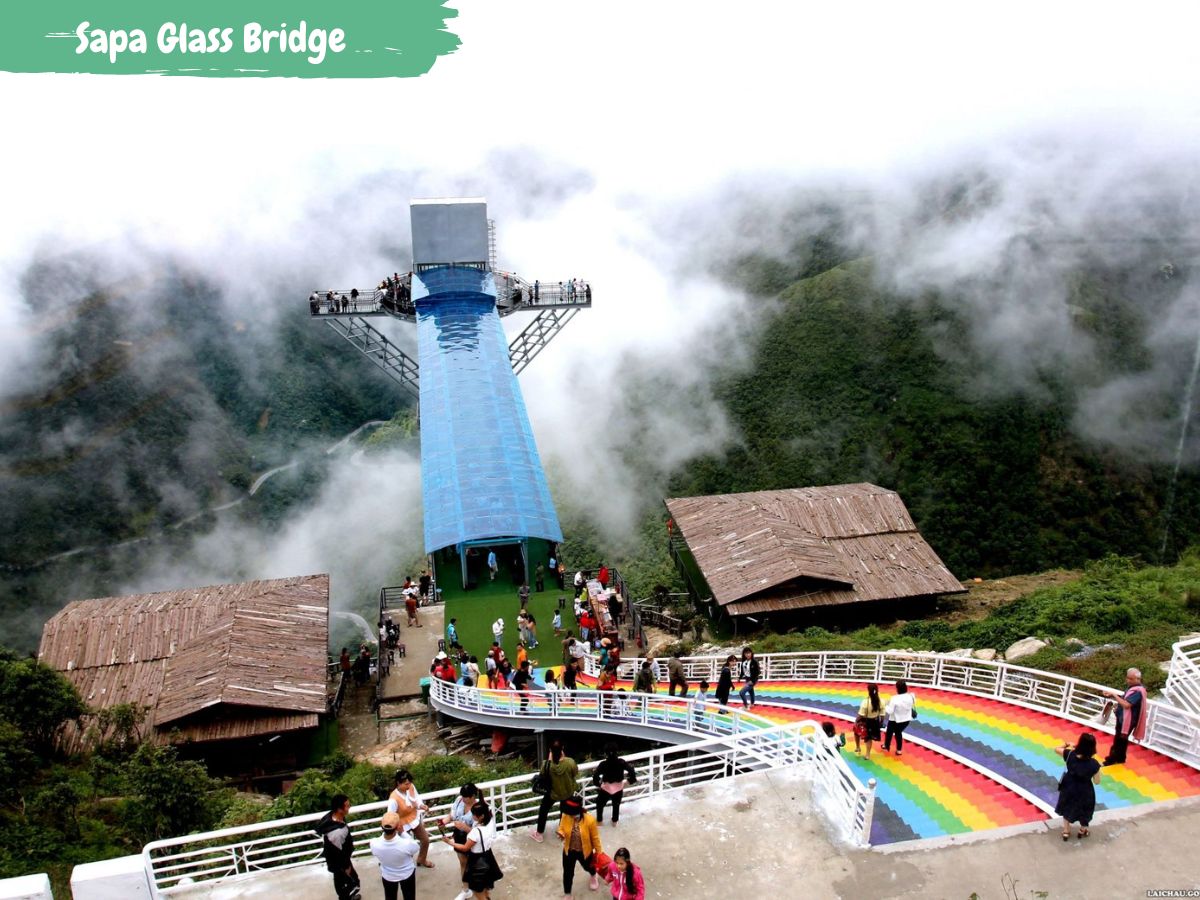Sapa, Travel Guide
The Ultimate Sapa Glass Bridge Travel Guide
The Sapa Glass Bridge (Cầu kính Rồng Mây) is a stunning architectural marvel located in the picturesque town of Sapa in northern Vietnam. This breathtaking bridge is a popular tourist attraction, offering visitors an exhilarating experience as they walk across its transparent glass floor, suspended high above the lush green valleys below. The bridge provides unparalleled panoramic views of the surrounding mountains and rice terraces, making it a must-visit destination for nature lovers and adventure seekers alike. The Glass Bridge has quickly become an iconic landmark in the region, drawing in visitors from all over the world who are eager to witness its beauty and experience the thrill of walking on glass high above the stunning landscape.
The Glass Bridge Sapa is a testament to modern engineering and design, seamlessly blending into the natural surroundings while providing a unique and unforgettable experience for visitors. Whether you’re seeking an adrenaline rush or simply want to marvel at the breathtaking views, the Sapa Glass Bridge is sure to leave a lasting impression on all who visit.
Key Takeaways
- The Sapa Glass Bridge is a popular tourist attraction in Sapa, Vietnam, known for its stunning views and unique design.
- The bridge was constructed in 2020 and is made of tempered glass, offering visitors a thrilling experience as they walk across it.
- The bridge features a curved design and offers panoramic views of the surrounding mountains and valleys, making it a popular spot for photography.
- Visitors are required to follow safety regulations, including wearing non-slip footwear and refraining from jumping or causing vibrations on the bridge.
- The Sapa Glass Bridge offers visitors the opportunity to capture breathtaking photos of the surrounding landscape and experience the thrill of walking on a glass bridge.
History and construction of the Sapa Glass Bridge
The Sapa Glass Bridge, also known as the Fansipan Glass Bridge, is a remarkable feat of engineering that has become a major tourist attraction in the Sapa region of Vietnam. Completed and opened to the public in 2022, the bridge was constructed as part of a larger tourism development project in the Hoang Lien Son mountain range.
- Location: Route No. 4, Son Binh, Tam Duong, Lao Cai
- Entrance fee: 200,000VND (children) – 400,000VND (adults)
- Opening hours: 7:00 AM – 6:30 PM
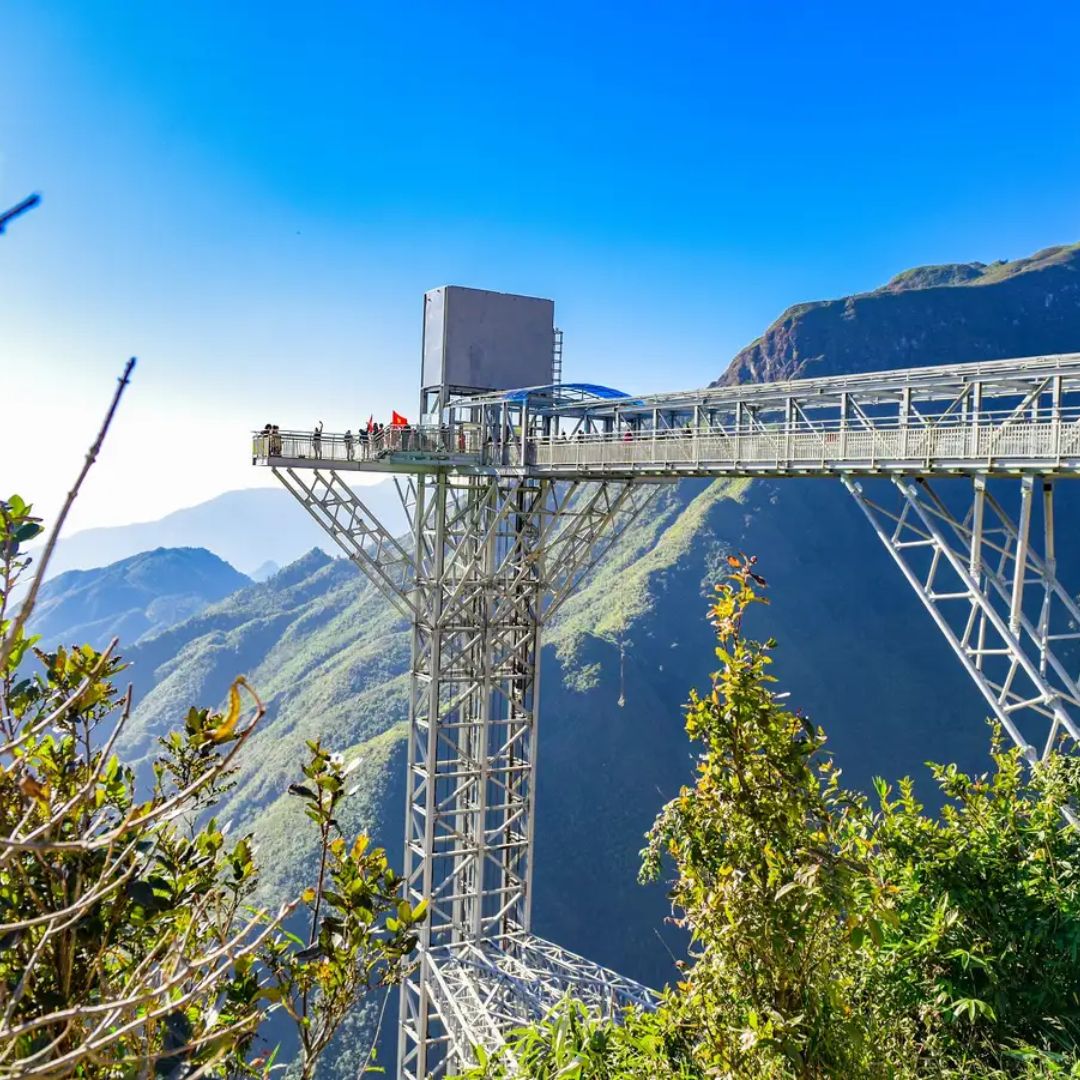
The bridge was designed and built by a Vietnamese construction company, with the goal of creating a unique and thrilling experience for visitors to the scenic Sapa landscape. Construction on the ambitious project began in 2020 and took around two years to complete, utilizing advanced glass and steel engineering techniques.
The result is a bridge that spans approximately 500 meters across a deep valley, providing absolutely stunning views of the surrounding mountains and forests. The bridge deck is made entirely of tempered glass panels, allowing those who dare to cross it to look down through the transparent floor below. The bridge is suspended by sturdy steel cables and support structures anchored into the mountainsides on either side.
Safety features like a tall glass barrier along the edges and regular rest areas ensure the Sapa Glass Bridge can accommodate up to 500 visitors at a time, though access is typically limited and reservations are recommended, especially during peak tourism seasons. Since its completion in 2022, this unique and exhilarating attraction has quickly become a major draw for thrill-seekers and sightseers visiting the beautiful Sapa region of Vietnam.
The bridge spans a significant distance, connecting two mountain peaks and providing a seamless pathway for visitors to traverse. The transparent glass floor was specially engineered to withstand the weight of multiple visitors at a time, while also offering unobstructed views of the valley below. The sleek, modern design of the bridge complements the surrounding landscape, creating a harmonious blend of nature and architecture. The construction of the Sapa Glass Bridge was a remarkable feat of engineering, resulting in a structure that has quickly become an iconic symbol of Sapa’s natural beauty and modern innovation.
Unique features and design of the bridge
The Sapa Glass Bridge boasts several unique features and an innovative design that make it a one-of-a-kind attraction:
Transparent Deck
The most striking feature of the Sapa Glass Bridge is its completely transparent deck. The bridge’s walkway is constructed using tempered glass panels, allowing visitors to look down through the floor as they cross the deep valley below. This creates an exhilarating, vertigo-inducing experience that is not found on most other bridges.
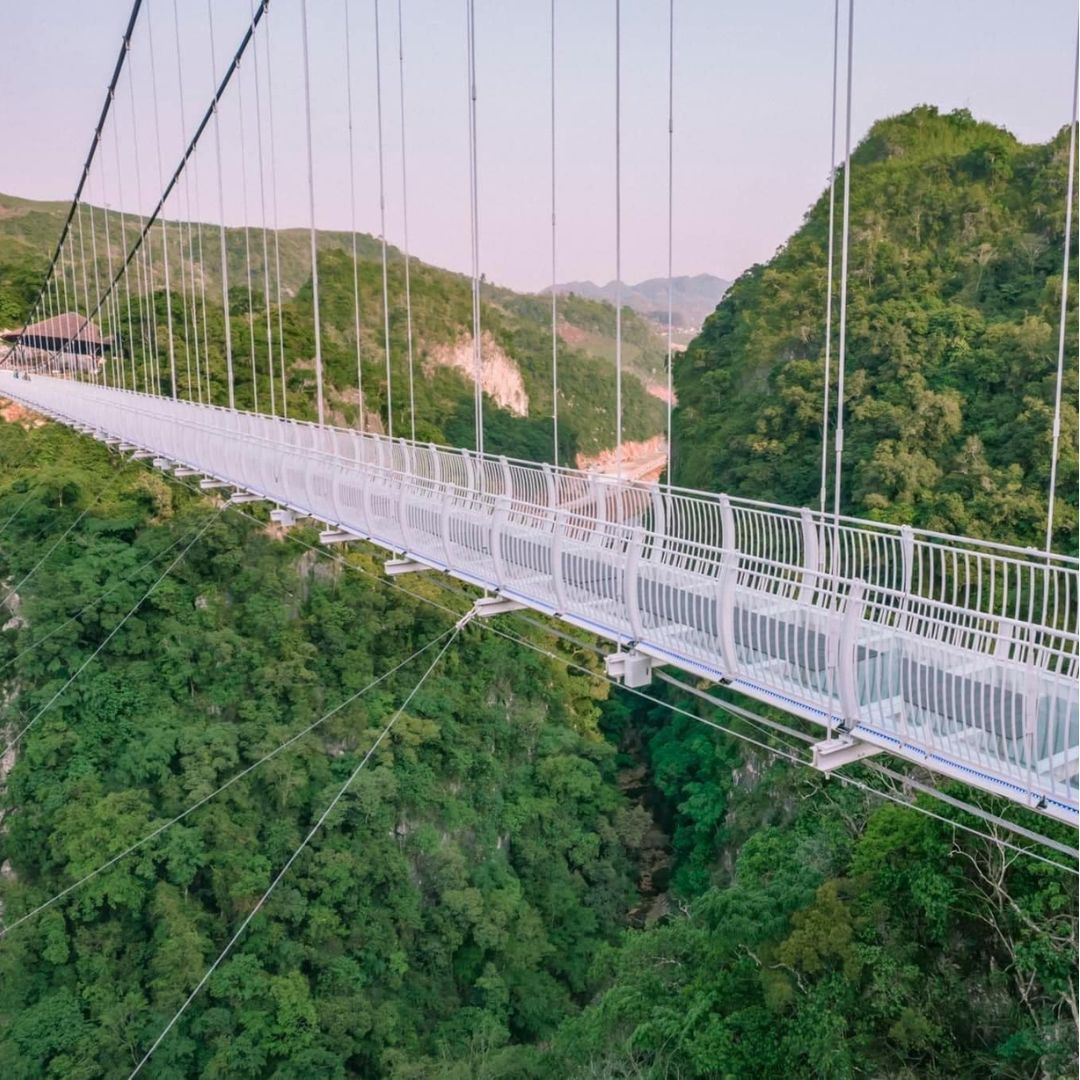
Suspension Design
Rather than relying on a traditional solid foundation, the Sapa Glass Bridge is suspended across the valley using sturdy steel cables and support structures. These cables are anchored into the surrounding mountainsides, leveraging the natural terrain to hold the bridge in place. This innovative suspension design helps the bridge blend seamlessly into the dramatic Sapa landscape.
Safety Features
To ensure the safety of visitors, the Sapa Glass Bridge incorporates several key design elements. Tall glass barriers line the edges of the walkway, providing a secure boundary. Regularly spaced rest areas also give people a chance to pause and take in the views without feeling overwhelmed. The bridge’s weight capacity allows it to safely accommodate up to 500 people at a time.
Scenic Views
Ultimately, the main draw of the Sapa Glass Bridge is the incredible panoramic views it offers. Stretching across a deep valley, the bridge provides sweeping vistas of the Hoang Lien Son mountain range and the lush, forested landscape below. On clear days, visitors can even glimpse the famous Fansipan peak in the distance.
Safety measures and regulations for visitors
While the Sapa Glass Bridge offers an exhilarating experience for visitors, safety is of paramount importance. To ensure the well-being of all who visit, strict safety measures and regulations are in place to govern visitor behavior on the bridge. Visitors are required to adhere to designated walking paths and are prohibited from engaging in any activities that could compromise the safety of themselves or others. Additionally, there are weight limits in place to ensure that the bridge can safely accommodate all visitors without risk of structural damage.
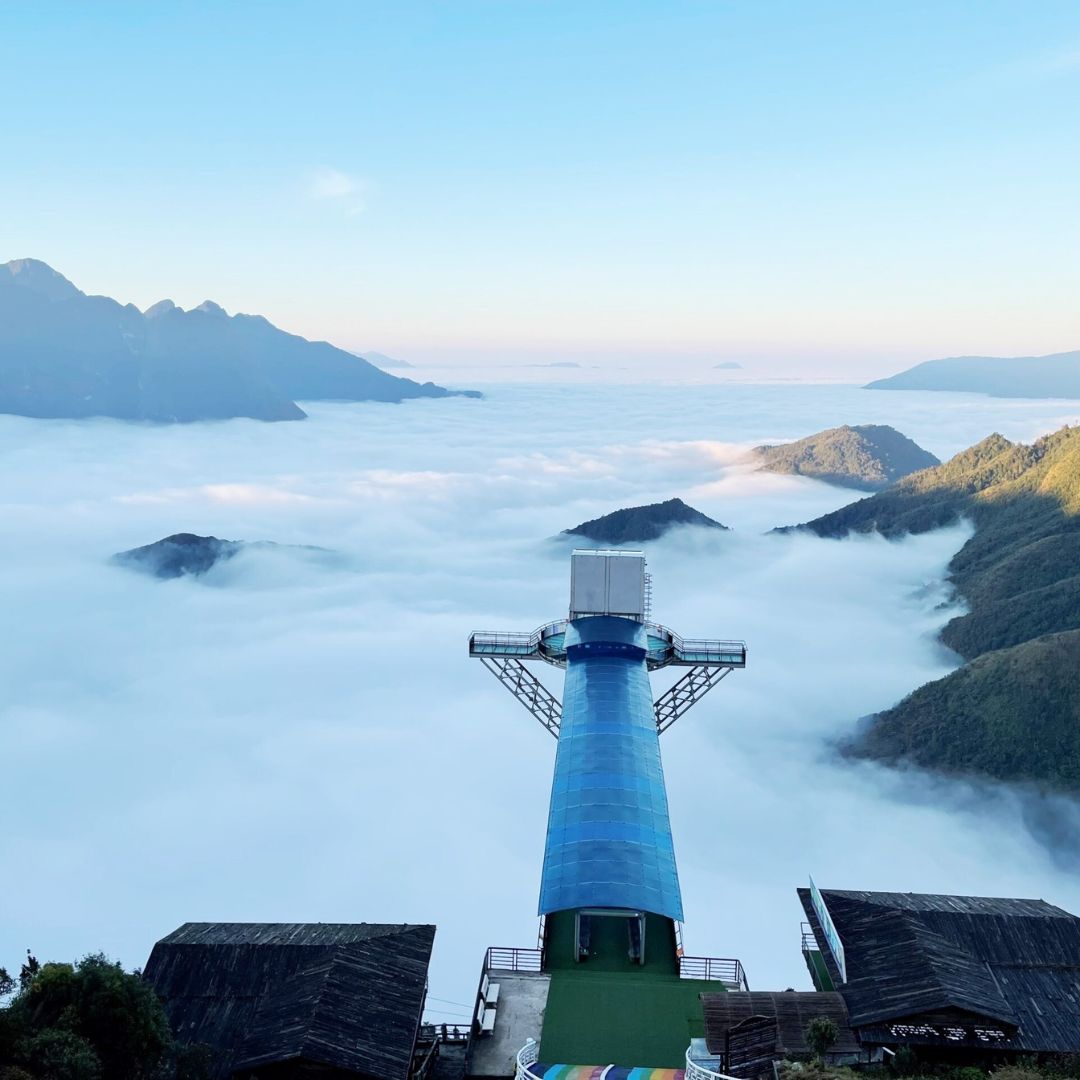
The bridge operators have emergency response plans and protocols in place should any incidents occur. This includes the ability to quickly evacuate the bridge if necessary. First aid staff and equipment are also stationed on-site to provide immediate assistance.
Furthermore, trained staff members are stationed at various points along the bridge to provide assistance and ensure that visitors are following safety guidelines. These staff members are equipped to handle any emergencies that may arise and are trained to prioritize visitor safety above all else. By adhering to these safety measures and regulations, visitors can enjoy the thrill of walking on the Sapa Glass Bridge while feeling confident in their well-being.
Spectacular views and photo opportunities
One of the most captivating aspects of visiting the Sapa Glass Bridge is the opportunity to take in the breathtaking views of the surrounding landscape. From high above the valley floor, visitors are treated to panoramic vistas of rolling mountains, lush greenery, and vibrant rice terraces. The transparent glass floor of the bridge allows for unobstructed views, providing an unparalleled sense of immersion in the natural beauty that surrounds it. Whether you’re an avid photographer or simply want to capture memories of your visit, the Sapa Glass Bridge offers countless photo opportunities that are sure to leave a lasting impression.
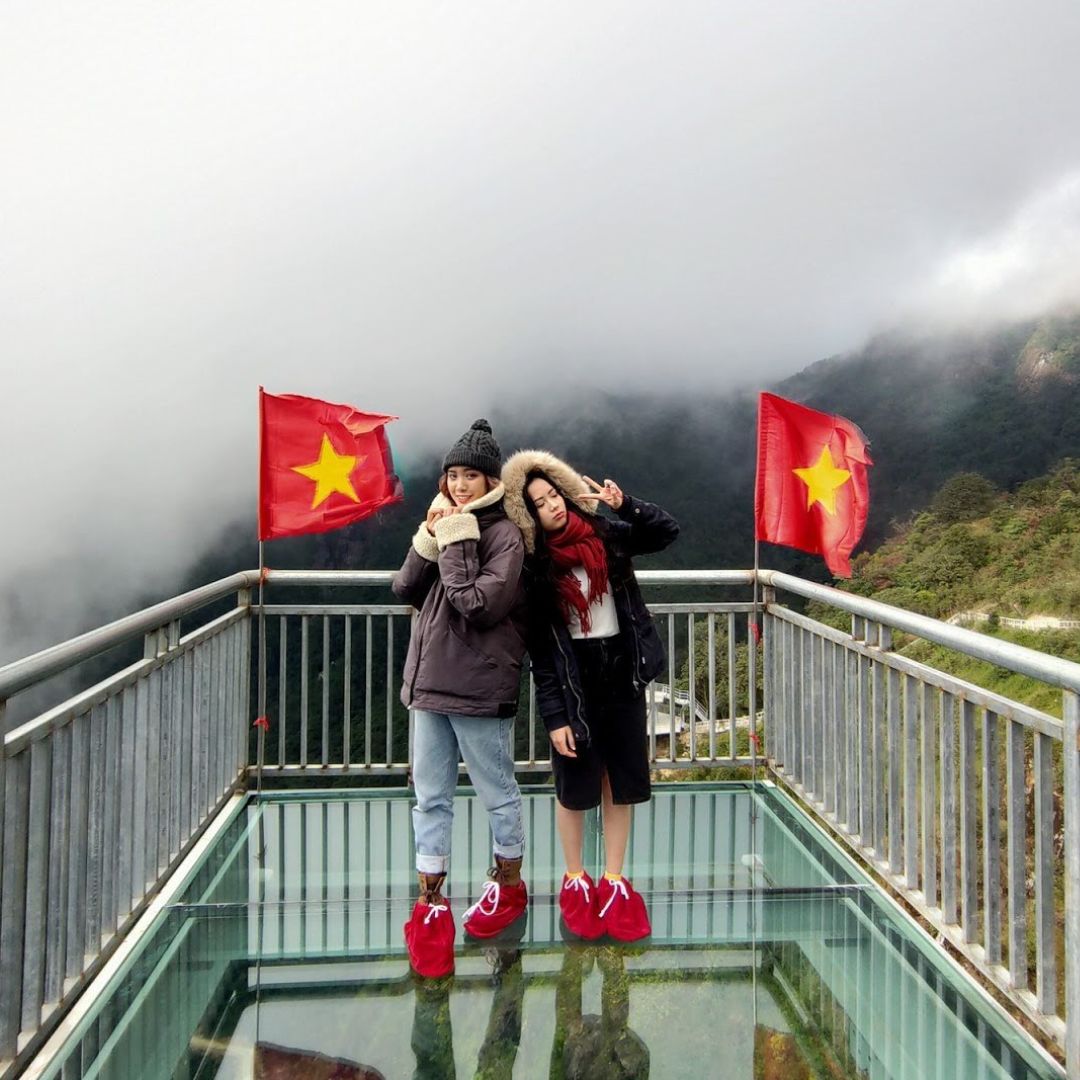
The bridge’s strategic location provides stunning views at any time of day, from sunrise to sunset. As the light changes throughout the day, so too does the appearance of the landscape below, offering visitors a dynamic and ever-changing backdrop for their photos. Whether you’re looking to capture sweeping panoramic shots or intimate close-ups of the natural surroundings, the Sapa Glass Bridge provides an endless array of photo opportunities that are sure to impress even the most discerning photographers.
Nearby attractions and activities in Sapa
In addition to visiting the Sapa Glass Bridge, there are numerous other attractions and activities to enjoy in the surrounding area. Sapa is renowned for its stunning natural beauty, with lush valleys, cascading waterfalls, and vibrant rice terraces waiting to be explored. Visitors can embark on guided hikes through the surrounding mountains, taking in the breathtaking scenery and immersing themselves in the rich cultural heritage of the region. For those seeking adventure, there are opportunities for mountain biking, zip-lining, and even paragliding, providing an adrenaline-pumping experience amidst some of Vietnam’s most stunning landscapes.
Fansipan Peak
Towering over the Sapa valley at 3,143 meters (10,312 feet), Fansipan is the highest mountain in Vietnam. Visitors can embark on challenging hiking expeditions to reach the summit, which offers panoramic views of the Hoang Lien Son range. Alternatively, a cable car system provides an easier route to the top.
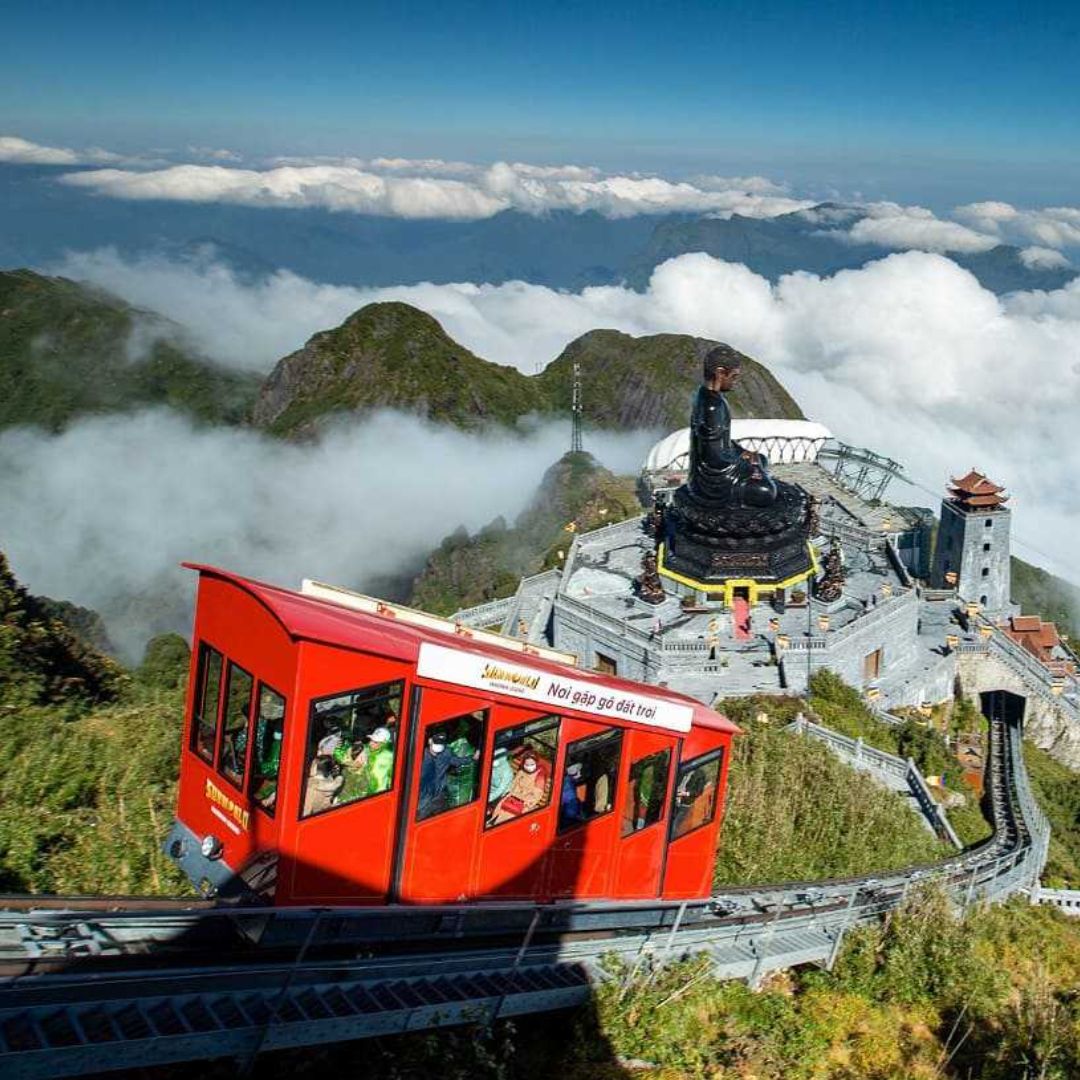
Reaching the top of Fansipan is a major challenge for avid hikers and mountaineers. The most common route is a strenuous 2-3 day trek through dense forests, past cascading waterfalls, and across steep, rocky terrain. Experienced guides are strongly recommended for these expeditions.
For those seeking a less demanding path to the summit, a recently constructed cable car system provides an easier alternative. This aerial tramway whisks visitors from the base to near the top of Fansipan in under 20 minutes, allowing them to take in the views without the grueling hike.
Ta Van and Lao Chai Villages
Ta Van and Lao Chai villages are two of the most scenic and culturally rich destinations near Sapa in northern Vietnam. They offer visitors a unique glimpse into the lives of the ethnic minority groups living in the region, primarily the Hmong and Dao people.
These traditional mountain villages are home to various ethnic minority groups, including the H’mong and Dao people. Visitors can immerse themselves in the local culture by exploring the villages, observing handicraft demonstrations, and even staying overnight in homestays.
Muong Hoa Valley
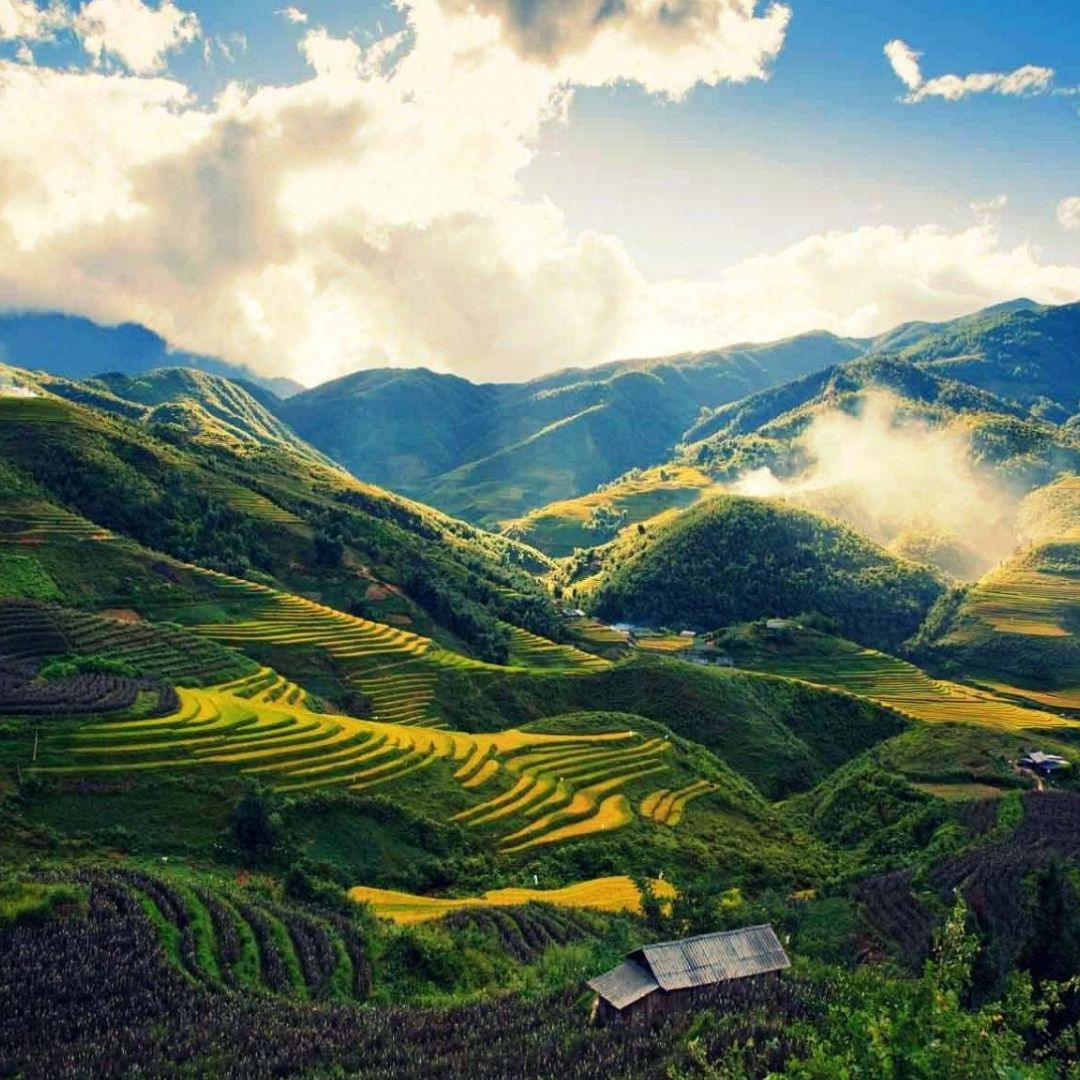
The Muong Hoa Valley is renowned for its spectacular terraced rice fields that cascade down the mountainsides. These meticulously crafted agricultural terraces, carved into the slopes over generations, create a mesmerizing patchwork of lush green hues. Visitors can witness the annual rice cultivation cycle, from planting to harvest, and learn about the sustainable farming practices of the local ethnic minority communities.
Flowing through the valleys and ravines are crystal-clear streams and rivers, fed by the abundant rainfall in the Hoang Lien Son mountain range. These waterways carve their way through the landscapes, forming natural pools and waterfalls that add to the valley’s serene ambiance. Hiking trails along the riverbanks offer opportunities to spot local wildlife and immerse oneself in the tranquil natural setting.
Thac Bac Waterfall
Also known as the Silver Waterfall, this 100-meter-tall cascade is one of the most impressive natural wonders in the Sapa region. Visitors can observe the powerful flow of water from various viewpoints and even swim in the natural pools at the base of the falls.
Thac Bac Waterfall plunges an impressive 100 meters (328 feet) down the mountainside, creating a dramatic and powerful display of cascading water. The waterfall’s sheer size and force make it a breathtaking sight to behold. Visitors can enjoy Thac Bac Waterfall from various vantage points, both up close and from a distance. Well-maintained trails and viewing platforms allow visitors to observe the waterfall from different angles and distances, providing ample opportunities for photography and appreciation of the natural wonder.
Sapa Town
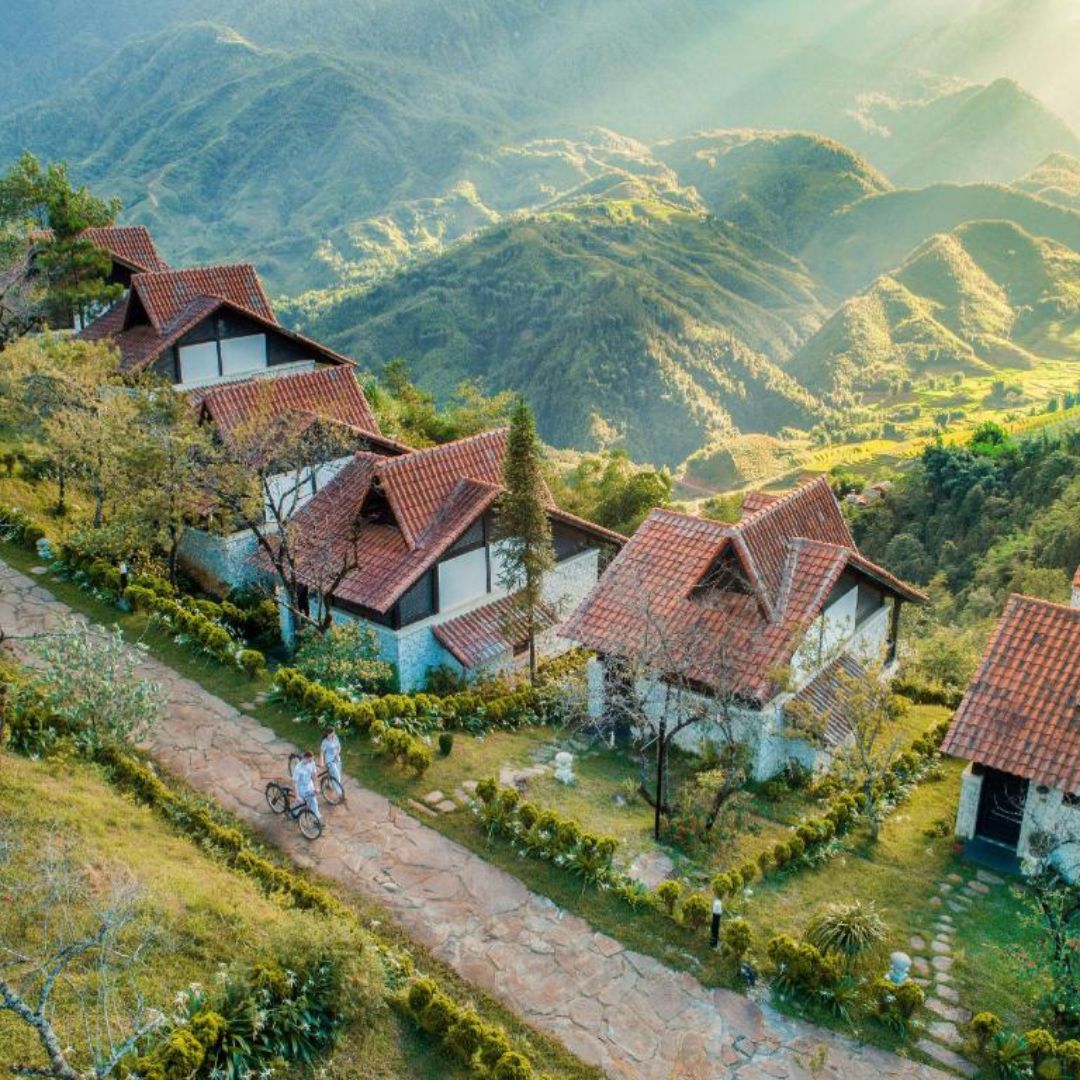
The main town of Sapa serves as a hub for visitors, offering a variety of accommodation options, restaurants, markets, and other tourist amenities. Strolling through the charming streets and browsing the local handicrafts are pleasant ways to spend time. Sapa is well-connected to the rest of Vietnam, with regular bus and train services from major cities like Hanoi. The town also has an airport, making it easily accessible for visitors from both within Vietnam and abroad.
Sapa is nestled amidst the Hoang Lien Son mountain range, which includes the iconic Fansipan Peak, the highest mountain in Vietnam. From the town’s vantage points, visitors can enjoy panoramic views of the surrounding lush, rolling hills and valleys, often shrouded in a soft, misty haze.
Tips for visiting the Glass Bridge Sapa
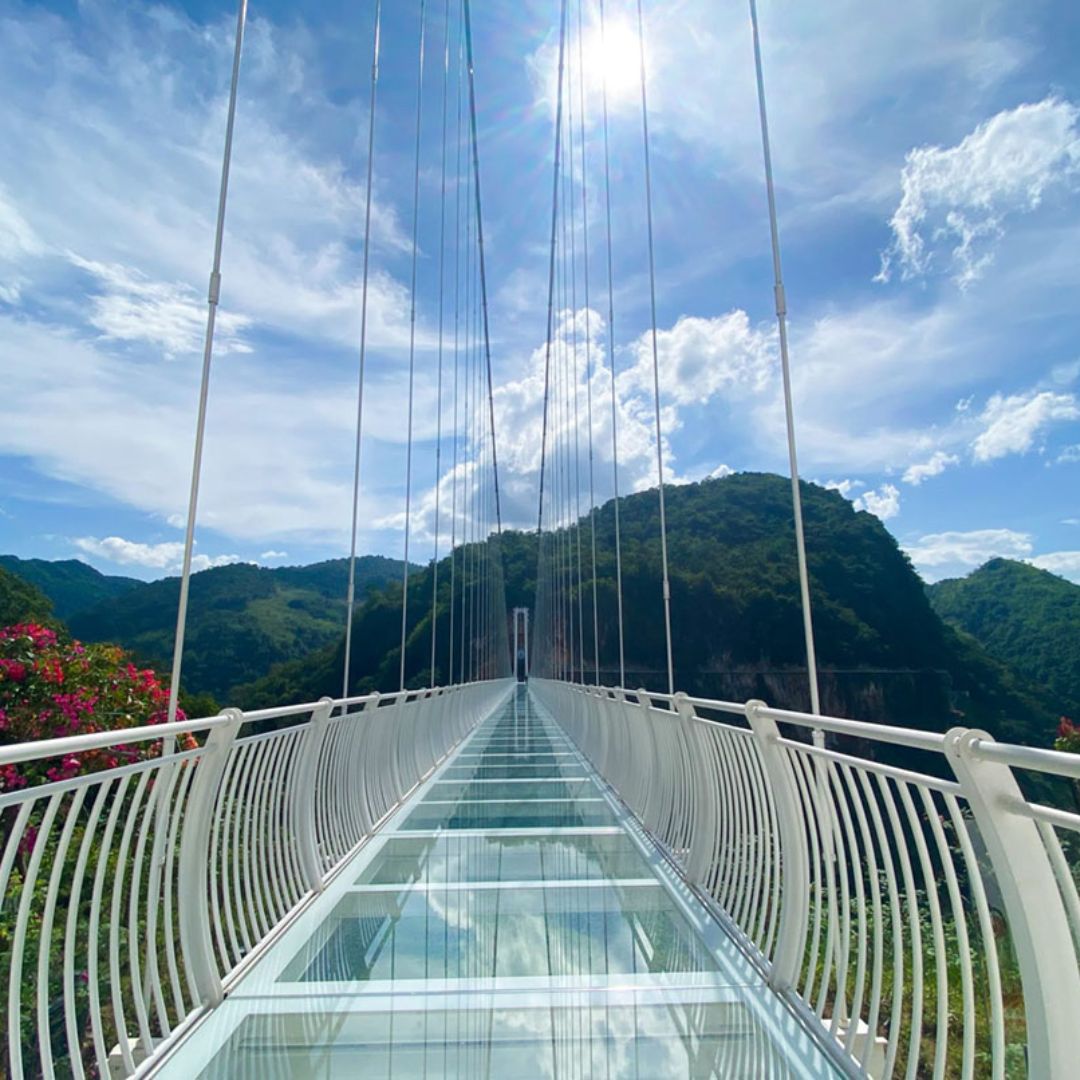
When planning a visit to the Sapa Glass Bridge, there are several tips to keep in mind to ensure an enjoyable and memorable experience.
- Advance Booking: The Sapa Glass Bridge is a popular destination, so it’s recommended to book your tickets in advance, especially during peak tourist seasons. This will ensure you secure your spot and avoid disappointment.
- Timing: The best time to visit the glass bridge is typically in the morning or late afternoon, when the lighting conditions are ideal for photographs and the crowds are generally smaller.
- Wear Appropriate Footwear: The glass bridge can be slippery, so it’s important to wear non-slip, comfortable shoes to ensure your safety and stability while crossing.
- Acrophobia Considerations: The Sapa Glass Bridge is not for the faint of heart. If you have a fear of heights, it’s essential to prepare yourself mentally and consider your comfort level before attempting to cross.
- Combine with Other Sights: While visiting the glass bridge, consider exploring other nearby attractions in the Sapa region, such as the Muong Hoa Valley, Thac Bac Waterfall, or the vibrant local markets.
- Weather Conditions: The Sapa region can experience unpredictable weather, so it’s a good idea to check the forecast and dress accordingly. Bring layers and rain protection, as the weather can change quickly.
In conclusion, the Sapa Glass Bridge is a remarkable architectural achievement that offers visitors an unparalleled opportunity to immerse themselves in Vietnam’s natural beauty. With its unique design, breathtaking views, and strict safety measures in place, this iconic attraction is sure to leave a lasting impression on all who visit. Whether you’re seeking adventure or simply want to marvel at the stunning scenery, a visit to the Glass Bridge Sapa is an experience not to be missed.

